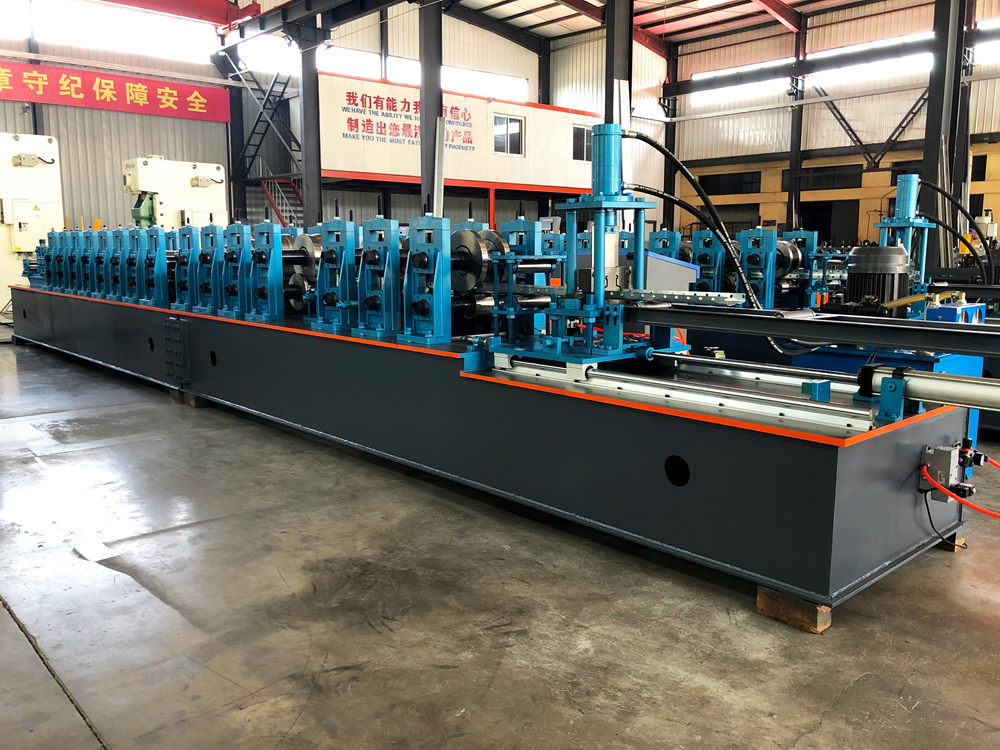
Understanding Steel Deck Cold Bending Machines
Steel deck cold bending machines are specialized tools used in the construction and manufacturing industries to shape and form steel deck materials efficiently and accurately. Steel decking is essential in the construction of commercial and industrial buildings, as it serves as a structural component that provides support for floors and roofs. In this article, we will explore the significance, functionality, and advantages of using cold bending machines for steel decking.
The Importance of Steel Decking
Steel decking plays a crucial role in modern construction. It offers several benefits, including high strength-to-weight ratios, durability, and resistance to various environmental conditions. Steel decks are extensively used in building frameworks, parking garages, and bridges due to their ability to support substantial loads while being lightweight. As construction continues to evolve, the demand for customized steel deck shapes has grown, leading to the need for efficient bending and shaping processes.
What is a Cold Bending Machine?
A cold bending machine is designed to form steel without applying heat. Unlike traditional bending methods that may require heating the metal to achieve the desired shapes, cold bending preserves the material’s integrity and strength. Cold bending maintains the mechanical properties of the steel, ensuring that once formed, the material can support the necessary loads required in construction.
These machines can process various steel profiles, including channel, angle, square, and rectangular tubing, among others. They are equipped with advanced technology to ensure precise bending angles, consistent lengths, and smooth finishes, providing a high-quality output ready for installation.
Functionality and Features
Steel deck cold bending machines typically feature several essential components
1. Rollers and Forming Dies These parts are crucial for shaping the steel. The rollers are positioned in a specific configuration to guide the steel into the desired shape as it is fed through the machine.
2. Control Systems Modern machines come equipped with computer numerical control (CNC) systems. This technology allows operators to program different bending parameters, ensuring repeatability and precision in production.

3. Adjustable Settings The flexibility of cold bending machines means they can accommodate various steel thicknesses and profiles. Operators can adjust the machine settings to meet specific project requirements.
4. Safety Features Given the heavy-duty nature of these machines, safety features such as emergency stops, protective barriers, and sensors are paramount to ensure operator safety during operation.
Advantages of Cold Bending Machines
Utilizing a cold bending machine for steel decking offers several notable advantages
1. Enhanced Precision The advanced technology employed in cold bending machines ensures that each bend is calculated precisely, leading to a higher degree of accuracy in fabricating steel decks.
2. Cost Efficiency By reducing material waste through precise cuts and bends and speeding up the production process, companies can lower their overall costs. This efficiency translates to savings on labor and raw materials.
3. Improved Strength Cold bending maintains the structural integrity of the steel, which may be compromised through traditional hot-bending methods. The result is a stronger, more reliable product that meets engineering specifications.
4. Versatility Cold bending machines can work with various materials and profiles, making them adaptable for different projects. This versatility allows manufacturers to cater to a broad range of client needs.
5. Environmentally Friendly With reduced waste and no need for energy-intensive heating processes, cold bending is a more sustainable option for steel fabrication.
Conclusion
Steel deck cold bending machines represent a significant advancement in steel fabrication technology. As the construction industry continues to push towards more efficient, cost-effective, and sustainable building practices, the role of cold bending machines becomes increasingly vital. By providing high precision, enhanced strength, and adaptability, these machines are indispensable tools for manufacturers aiming to meet the growing demands of modern construction. As innovations continue to unfold, we can expect these machines to evolve further, supporting the industry's long-term sustainability and progress.